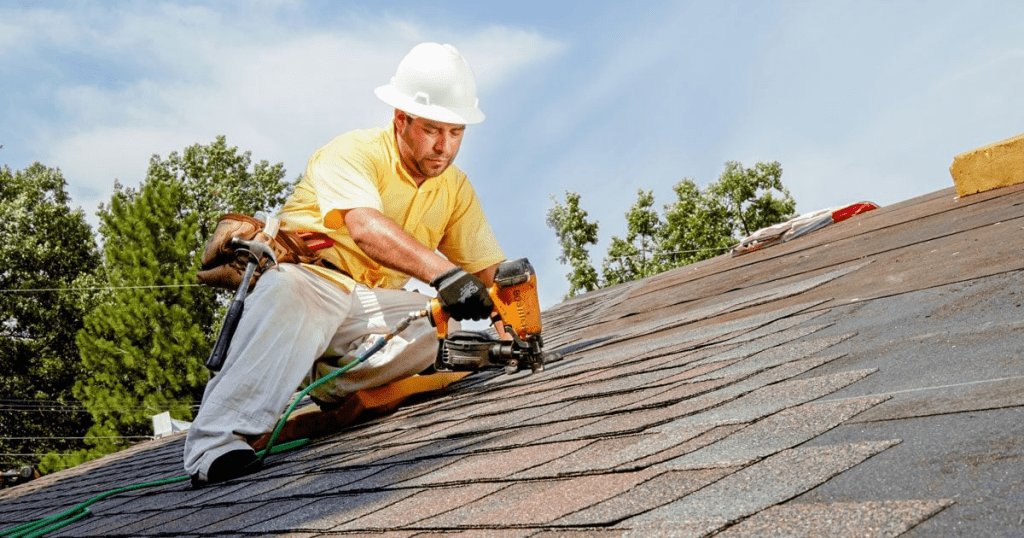Introduction
If you’ve been thinking, “I am decently handy can I roof my own house?” you’re not alone. Many homeowners wonder if roofing is a realistic DIY project or something best left to professionals. While doing it yourself can save money, roofing is a serious job that requires skill, safety awareness, and a lot of preparation. Let’s break down what you need to know.

Can a Handy Homeowner Really Roof Their Own House?
People Also Ask: Is roofing hard for beginners?
Roofing isn’t impossible for a handy person, but it’s far more challenging than most DIY projects. Key considerations include:
- Physical Demands: Roofing involves climbing, lifting, and working in the sun for long hours.
- Skill Level: Proper installation is critical to prevent leaks and damage.
- Time Commitment: A professional crew may finish in 1–2 days. A DIYer might take 1–2 weeks.
Read too: Hail Damage Roof Repair: Essential Guide to Restoring Your Home’s Protection
According to HomeAdvisor, the average cost of a professional roof replacement in the U.S. ranges between $8,000–$11,000. While doing it yourself could cut labor costs, mistakes can lead to repairs that cost even more.
Tools and Materials You’ll Need
People Also Ask: What tools do I need to roof my own house?
Here’s a checklist of basics:
- Roofing nails, hammer, or nail gun
- Roofing felt or underlayment
- Shingles (asphalt, metal, or your chosen type)
- Safety harness and roof brackets
- Chalk line, utility knife, and measuring tape
- Ladder and scaffolding for safe access
Step-by-Step Guide to Roofing Your Own House
If you decide to take on the project, here’s a simplified breakdown:
- Remove Old Roofing – Strip shingles, nails, and flashing. Dispose properly.
- Inspect Roof Decking – Replace rotten or soft plywood.
- Install Underlayment – Roll out roofing felt or synthetic underlayment for waterproofing.
- Add Drip Edge & Flashing – Install at roof edges and around chimneys/vents.
- Lay Starter Shingles – Begin at the bottom edge to prevent leaks.
- Install Main Shingles – Work upward, staggering seams.
- Cap the Ridge – Finish with ridge shingles for a watertight seal.
Pros and Cons of DIY Roofing
| Pros | Cons |
|---|---|
| Save thousands in labor costs | High risk of injury from falls |
| Personal satisfaction | Mistakes can void warranty |
| Learn valuable skills | Time-intensive and exhausting |
| Full control over materials | Lower resale value if not done professionally |
Safety Considerations
Roofing is one of the most dangerous construction jobs. According to OSHA, falls account for over 33% of construction fatalities. Always:
- Wear a safety harness.
- Avoid working in bad weather.
- Keep your work area clean to prevent trips.
- Never roof alone—have someone assist.
When It’s Better to Hire a Professional
If your roof is steep, large, or structurally complex, hiring a professional may be the best choice. Contractors also offer warranties and expertise that DIY projects can’t match. For many homeowners, peace of mind is worth the cost.
FAQ Section
Can I roof my house with no experience?
Technically yes, but it’s risky. Without training, you may make mistakes that lead to leaks and structural issues.
How long does it take to DIY a roof?
A small roof might take 5–7 days for a handy homeowner, while pros can finish in 1–2 days.
Do I need a permit to roof my house?
Most U.S. cities and counties require a building permit for roof replacement. Check your local codes.
Can I just roof over existing shingles?
In some cases, yes—but it depends on local codes and roof condition. Adding layers can shorten lifespan.
Will DIY roofing save me money?
Yes, on labor costs—but one major mistake could wipe out those savings.
Conclusion
If you’re asking, “I am decently handy can I roof my own house?” the answer is yes—with enough preparation, patience, and safety precautions. But roofing is no small weekend project. For many homeowners, hiring a professional is the safer and smarter long-term choice.



Leave a Reply